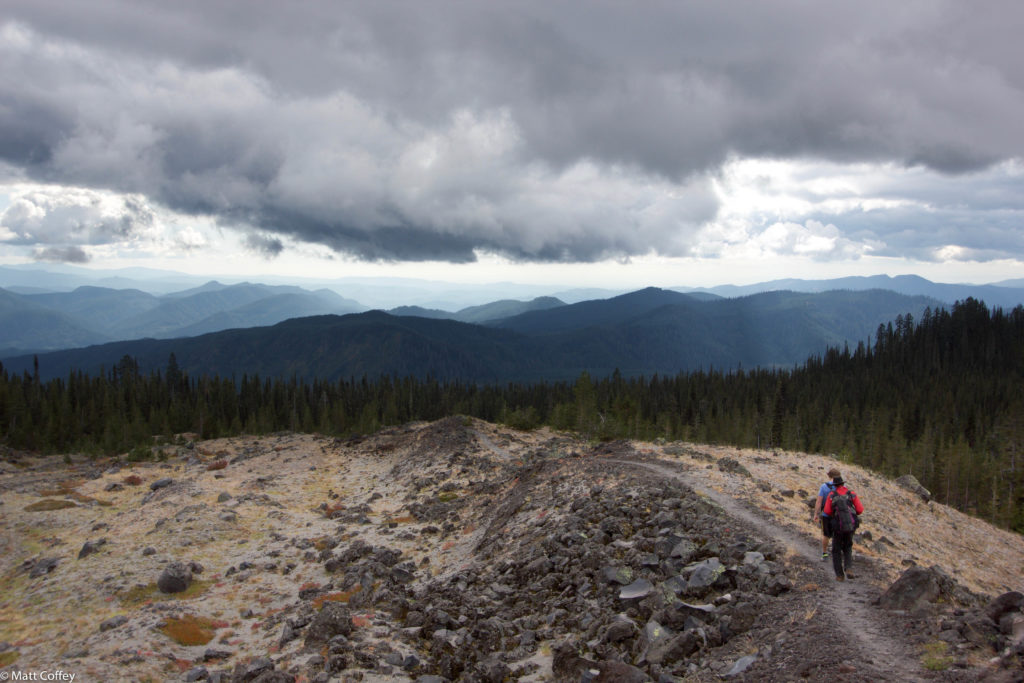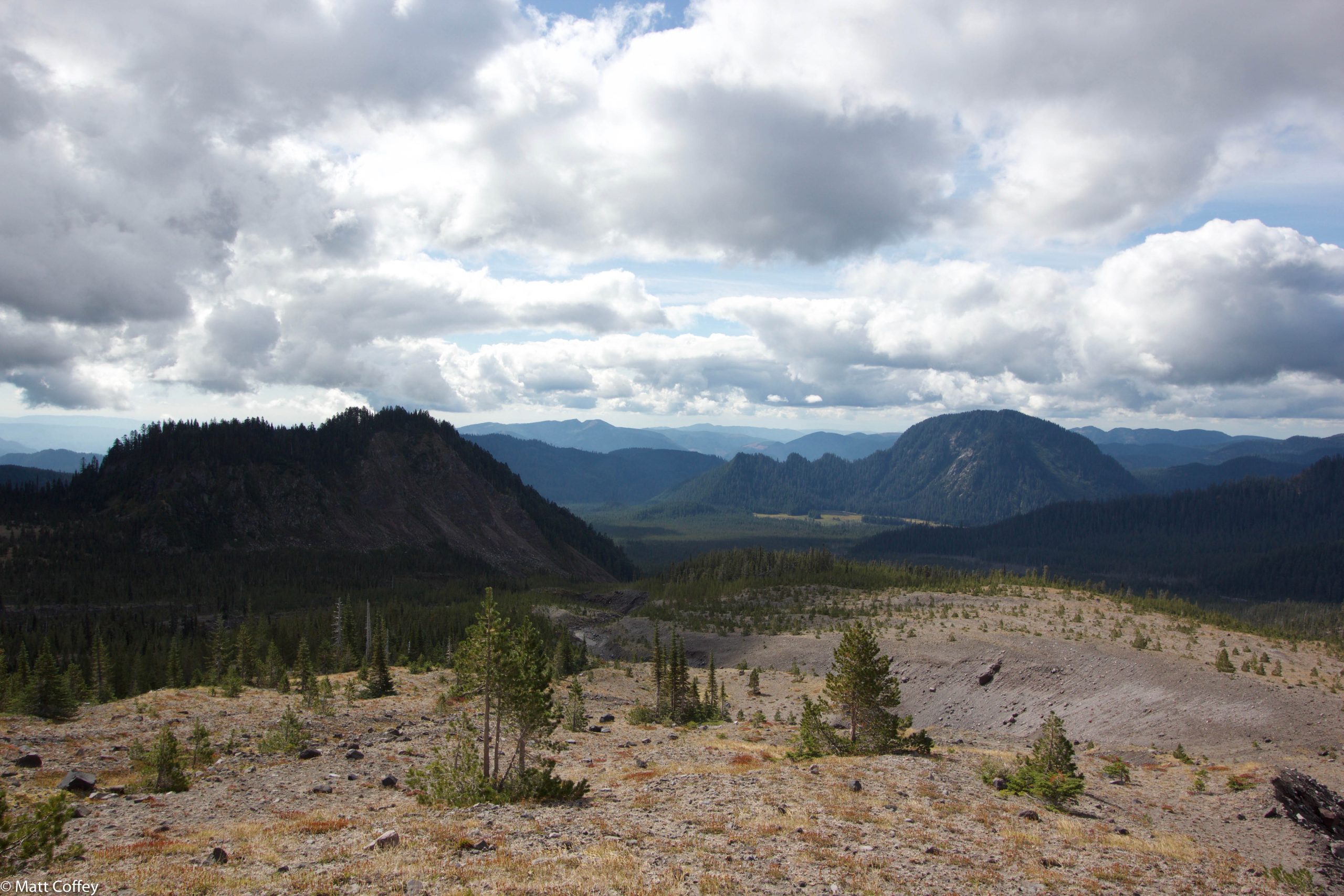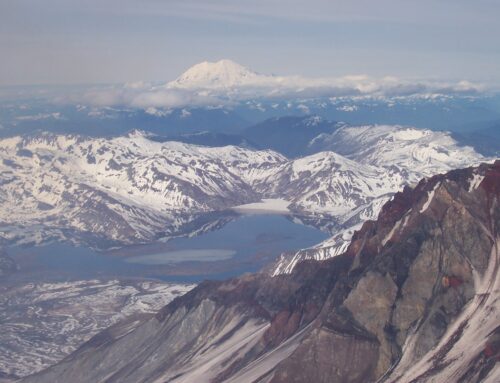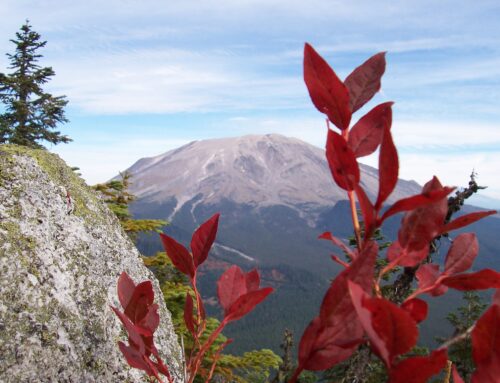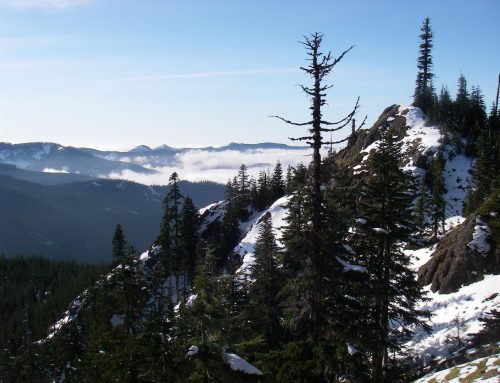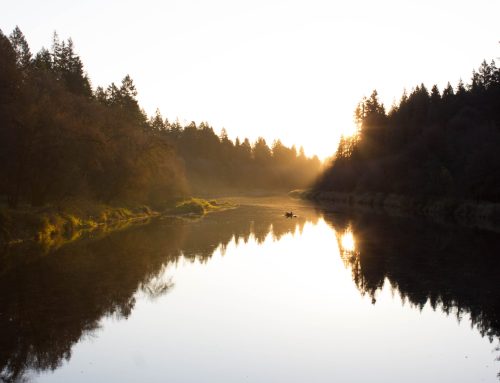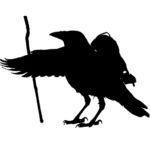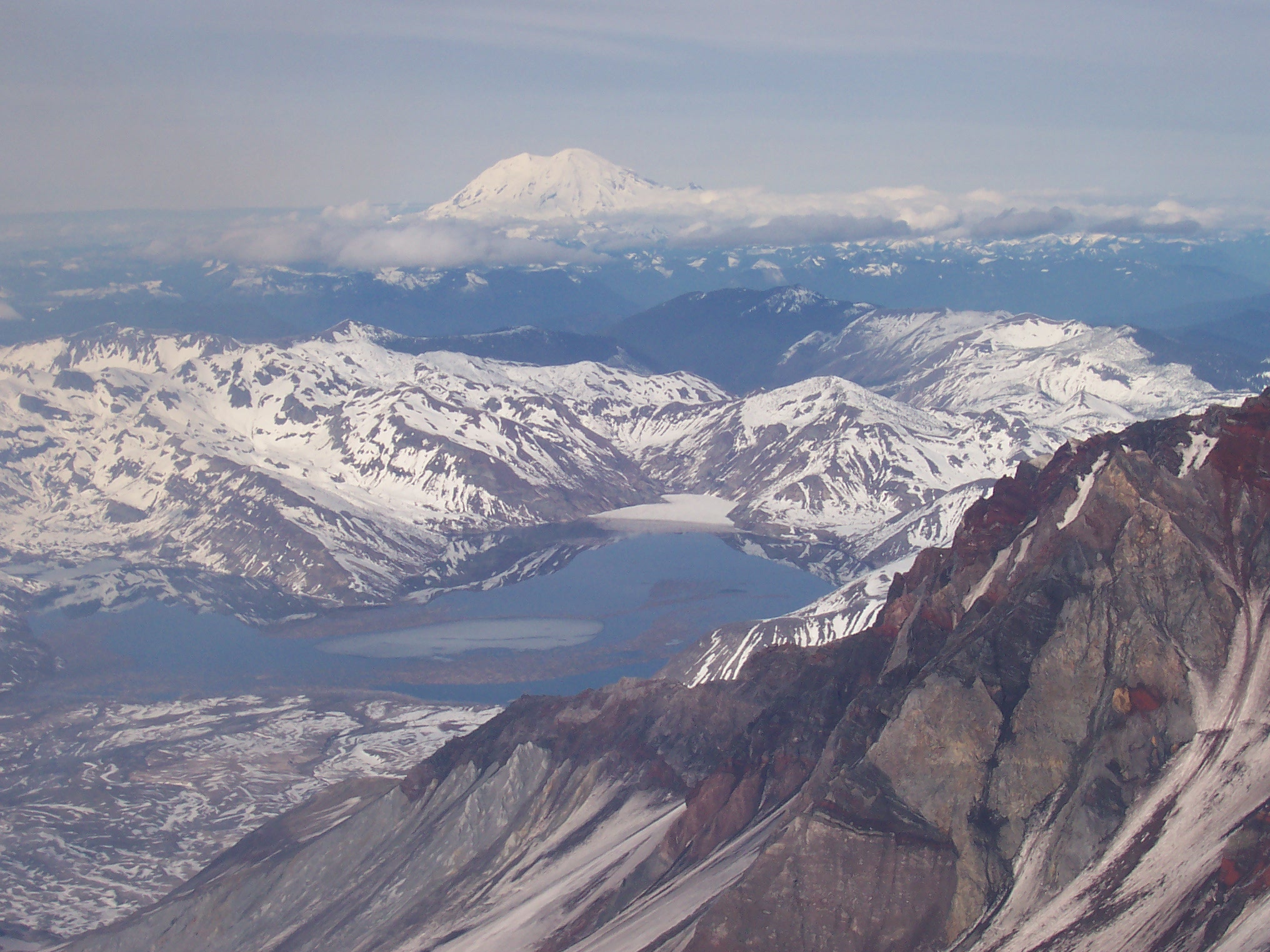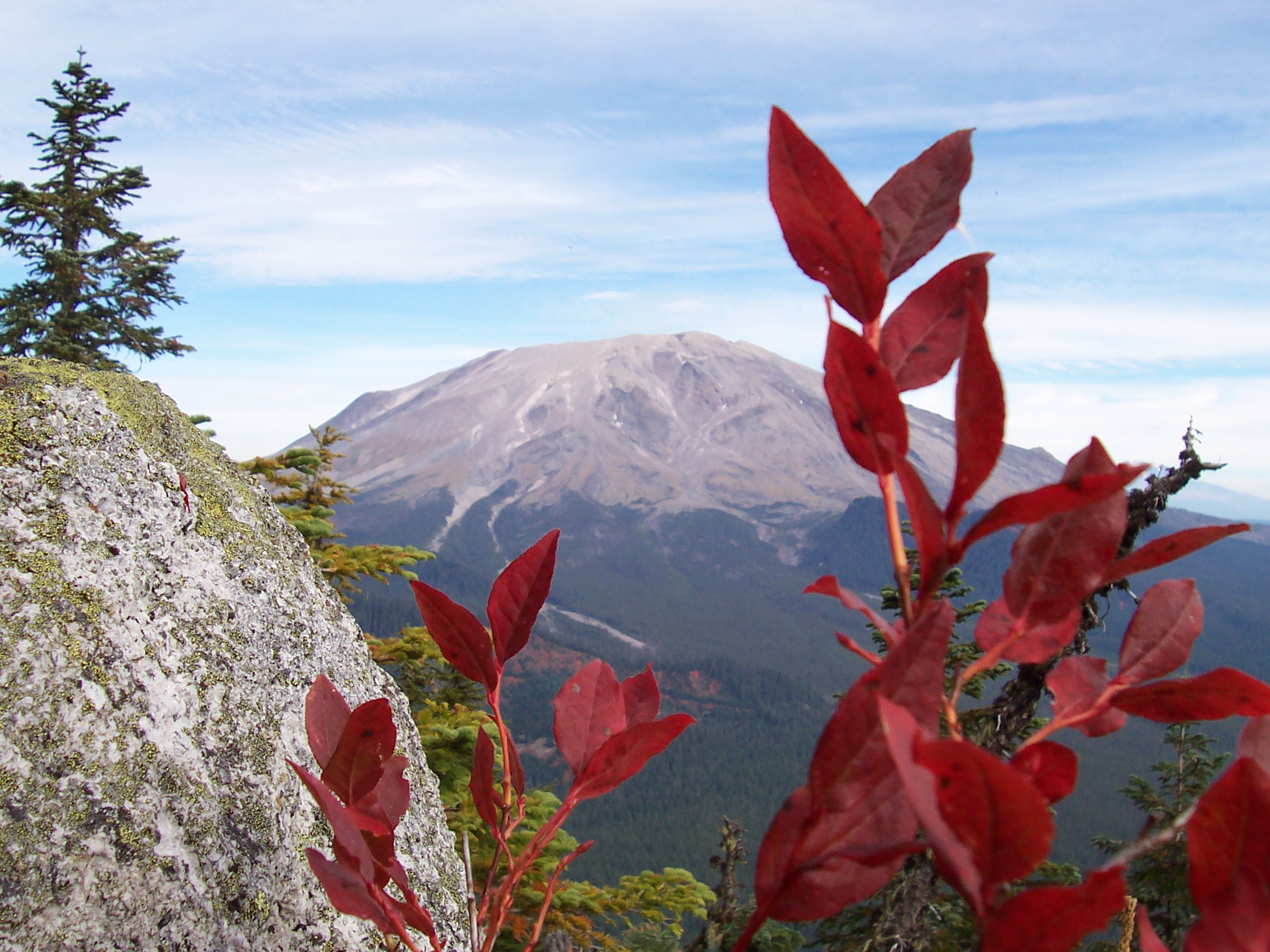We sat along the Loowit Trail, watching dark cloud masses form a charcoal and blue checkerboard across the late September sky. A few dozen yards below, a scrubby treeline was slowly sprouting back out of the sandy soils near the Twin Domes. In the near distance, Goat Marsh oscillated from subtle-bright emerald to dark-moody shadows in the endlessly shifting sunlight. 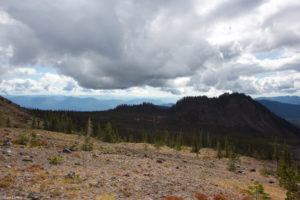 To our left, Monitor Ridge framed the endless ripples of the southern Gifford Pinchot as they disappeared into the horizon. The periods of sun were warm enough to comfortably relax, and smile at the stubborn fight of the last wildflower blooms. Confident, sporty quorks announced ravens nearby. We had finished our five-mile hike out from the burgundy talus and dense forests surrounding Red Rock Pass. We were happy to simply sit, absorb, and observe the equinox.
To our left, Monitor Ridge framed the endless ripples of the southern Gifford Pinchot as they disappeared into the horizon. The periods of sun were warm enough to comfortably relax, and smile at the stubborn fight of the last wildflower blooms. Confident, sporty quorks announced ravens nearby. We had finished our five-mile hike out from the burgundy talus and dense forests surrounding Red Rock Pass. We were happy to simply sit, absorb, and observe the equinox.
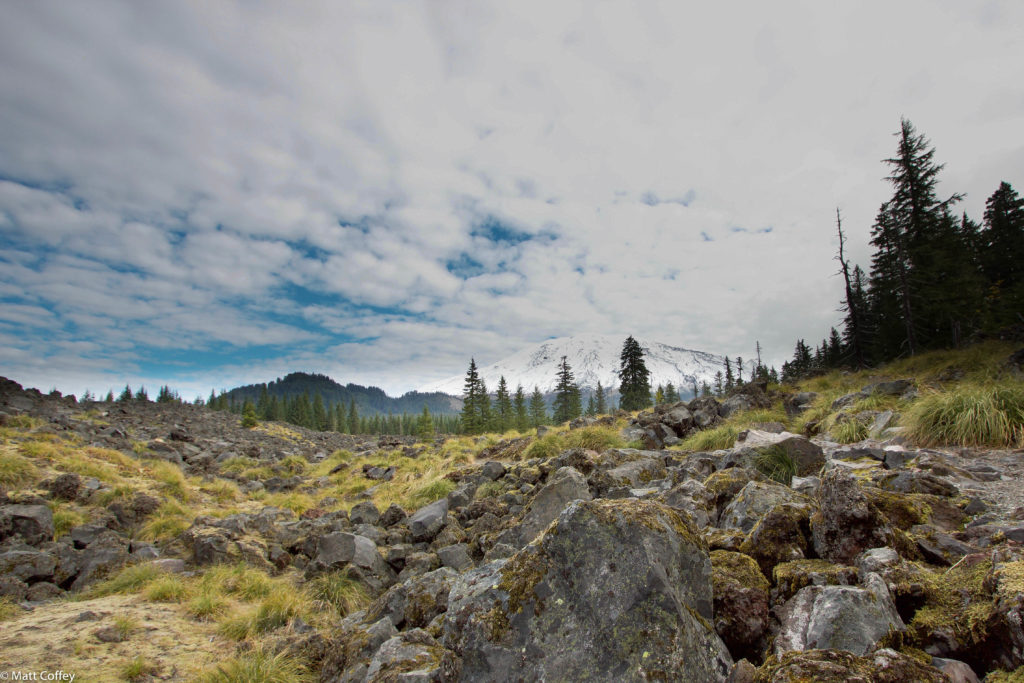
The first three miles along the Toutle Trail were the usual combination of dark forests, humid air, and progressively increasing views. After a thousand foot climb from the trailhead we found Butte Camp alive and well. Neatly tucked into the protective walls of the Twin Domes, the camp is an almost perfectly flat, sub-alpine pasture of firs, alders, grasses, and elk. Small lava-rock hummocks greet hikers approaching the pasture, providing a tempting, short break and exploration opportunity. A small stream flows alongside the trail on the east side of the pasture, draining the large bowl formed by the domes, and providing a convenient and perennial water supply.

The trail climbs away from the camp in three large, sweeping switchbacks that move through the hardy old-growth forest in a quick, five hundred foot ascent to the butte itself. 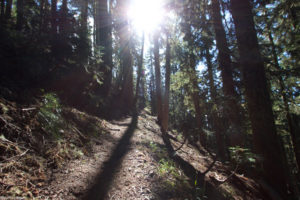 We take lunch at the butte, enjoying the first expansive view of the hike. Small patches of red indicate the lava fields of Red Rock Pass below us, with Cinnamon Peak ridge and the sharp lines of the Siouxon backcountry framing the distance. A sandy, sloughing slope to our right provides access to the Domes themselves. The difficult passage up that slope requires fighting through thick underbrush, steep terrain, and difficult footing, but provides a glimpse into the worldview of the wapiti. Well worn elk trails meander through the intertwined meadows and forests on top of the Domes. The elk trails terminate on the southwestern summit of the domes, ending on top of a small knob that overlooks the Goat Marsh ecosystem. Humans may not be the only species to enjoy a view.
We take lunch at the butte, enjoying the first expansive view of the hike. Small patches of red indicate the lava fields of Red Rock Pass below us, with Cinnamon Peak ridge and the sharp lines of the Siouxon backcountry framing the distance. A sandy, sloughing slope to our right provides access to the Domes themselves. The difficult passage up that slope requires fighting through thick underbrush, steep terrain, and difficult footing, but provides a glimpse into the worldview of the wapiti. Well worn elk trails meander through the intertwined meadows and forests on top of the Domes. The elk trails terminate on the southwestern summit of the domes, ending on top of a small knob that overlooks the Goat Marsh ecosystem. Humans may not be the only species to enjoy a view.
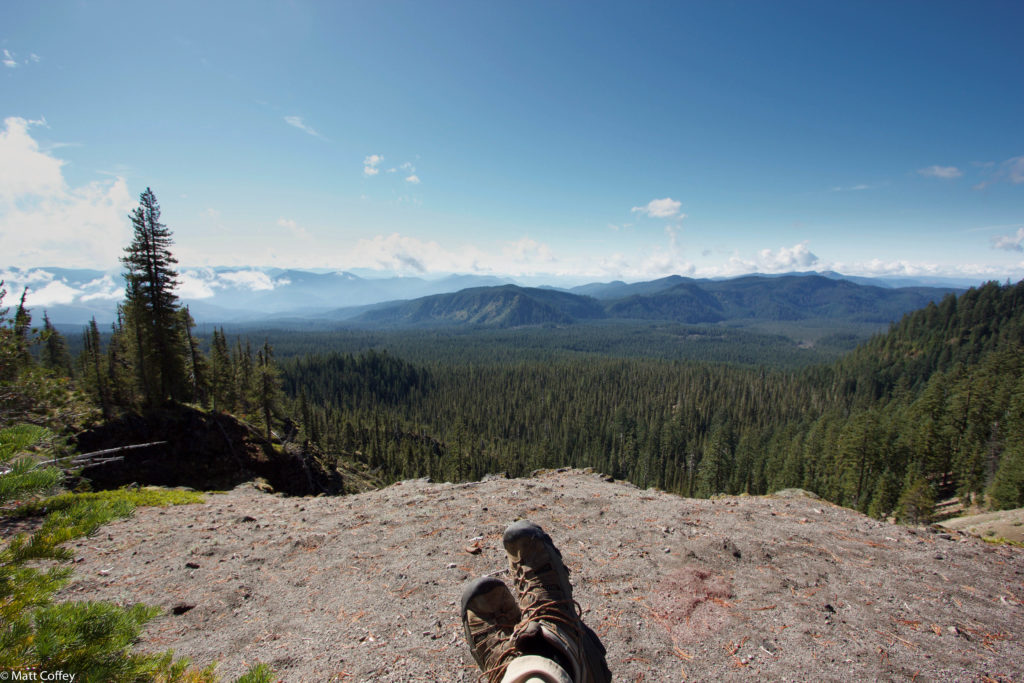
We moved on to the intersection with the Loowit trail 216. The 238A spent its last half mile moving through the short forest of stunted trees that covers a tephra plain between the domes and the mountain. The ecological shift is sudden past the butte viewpoint. Dark forests of tall, strong, moss-draped timber open into a bright expanse of uniformly underdeveloped trees, sand, and rock. The trail climbs a low lava ridge as it meets the Loowit. As we slowly climbed this rise, two small meadows appeared on either side of the trail, the ridges of the Siouxon fell away in the distant east, and the massiveness of Loowit dominated the scene.
This couplet of micro and macro scale views will repeat again and again as the Loowit Trail undulates over ridge after ridge. This southwest corner of the mountain is the least impacted by the recent volcanism. This section of the 216, between the Domes and the Toutle River, is an enveloping scene of forests, meadows, rock, elk, jays, ravens, and alpine views.
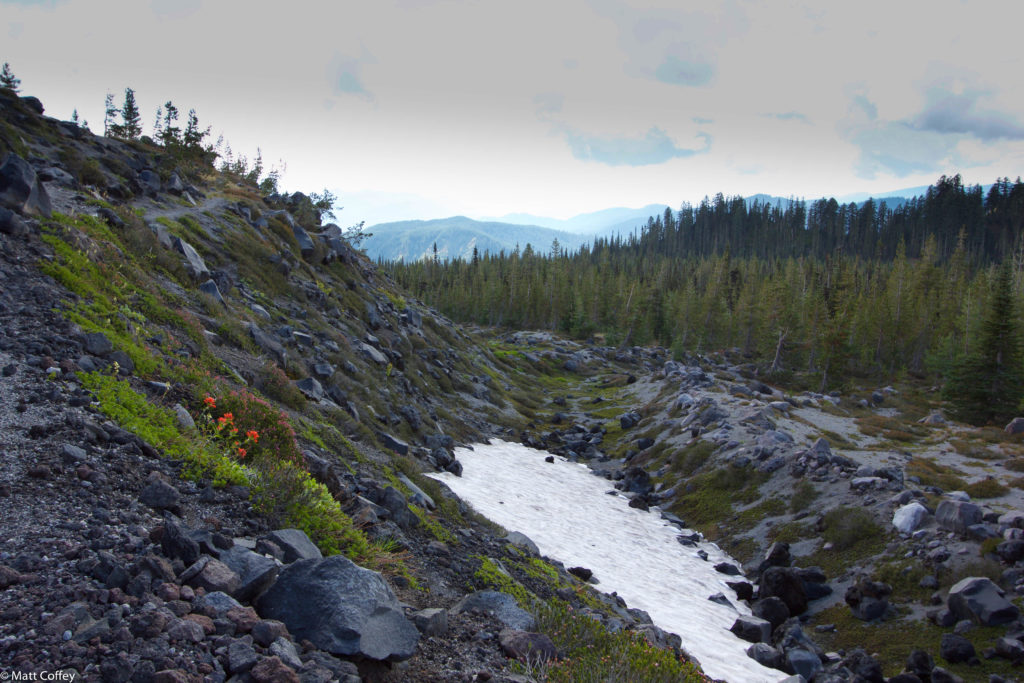
Equinox marks the midpoint in the sun’s annual travels through the sky. It marks the expected change in seasons; summer to fall, and winter to spring. It marks the assumed shift in weather; cool to warm, warm to cool. The science behind these effects is often lost to memory as they affect us less now in our modern world. When I mention marking an equinox or solstice, the response is often to ask for a reminder about the difference between the two.
Historically, the opposite was true. Humans living a pre-modern lifestyle were vitally aware of the pulses and shifts that impacted their ecosystem. They were aware because it was survival to them. We are not because it is not.
Lughnasadh was an early Celtic festival that marked the beginning of harvest. Its various rituals, feasting, and trading often occurred on top of local hills and mountains. Over time, the ritual of marking harvests drifted in its meaning to incorporate medieval Christian ideas. Today, the Irish mark modern Lunasa by hiking nearby hills.
Social patterns arise in order to manage biological patterns. Past rituals cemented group bonds. Part of the Lughnasadh ritual’s function was to link the biological inputs and outputs of physical labor and harvesting food with the social benefits of cooperation, and group bonds. Ritualistically marking the seasonal change became part of a social pattern of habits, norms, and expectations that formed a culture in tune with the natural world.
Modern social patterns revolve around the boxes we live in. Our rituals of school, labor, cooperation, and group loyalty center around acquiring, growing and maintaining the houses, offices, cars, and technological devises through which our lives take place. Mostly disconnected from the natural world, our awareness tends to shrink to the size of the boxes that are useful to us.
Pre-modern social patterns reinforced awareness of forces larger than people. In contrast, modern social patterns unintentionally reinforce a sense of control, stability, and power that only exists inside our boxes.
Observing the equinox is one of the rituals I use to intentionally broaden my awareness. The view from a high place, feeling the wind, chilling in the cooling air, and watching the seasonal change all serve to viscerally remind me of my smallness and transience. The reminder serves to balance the drift in outlook towards assumptions of significance and permanence that naturally arise from living life in a box.
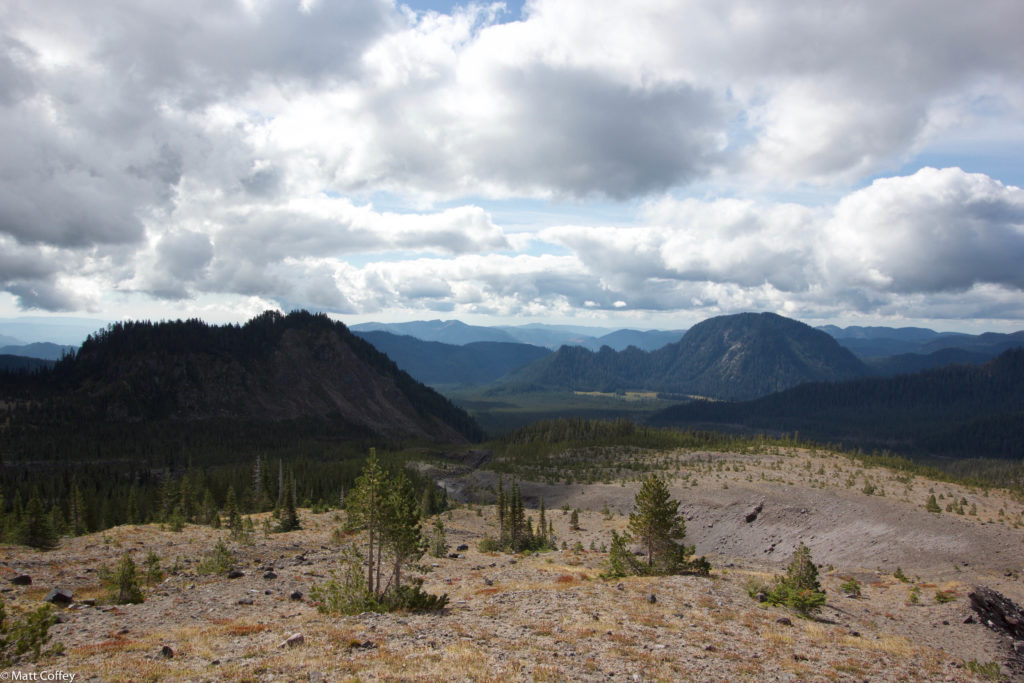
In this way, hiking to high places serves a function well beyond recreation. I suspect that the early rituals took place on high places in part due to the same drive that pushes many of us moderns to any place with a view, the desire to transcend. Observing the equinox is a way for me to recalibrate my awareness, to experience the reality larger than me.
